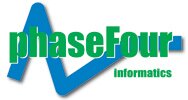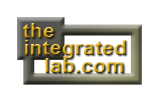Any organisation considering an electronic laboratory notebook is faced with a significant choice of potential solutions. The ELN market is currently served by over 30 vendors who offer solutions that can be broadly defined as Electronic Laboratory Notebooks. Amongst these vendors are some established names; others have seized the opportunity to develop new businesses to meet market demand; you can also use college term papers for sale in this way, you will cover the entire problem area and cover relevant issues. See the Useful Links page for a list of ELN vendors, with links to their websites.
Most products offer a core functionality that acts as a direct replacement for the paper laboratory notebook and provides generic support for patent evidence creation, records (knowledge) management and cross-discipline collaboration. In addition, the various ELN products provide the ability to integrate with discipline-specific functionality. The dominant discipline served by the majority of ELN vendors is Chemistry, but there are a growing number of solutions targeted at the Biology sector. The theme of integration is a key requirement as organisations move towards the concept of joined-up R&D.
The market has seen a steady but limited growth, constrained by concerns about legal admissability of electronic records, long term data preservation, costs of converting from paper to electronic records and concerns about user acceptance. And behind these ‘business’ related issues, there is the constantly changing world of technology. Coming to terms with the business issues is one thing; understanding the consequences of service orientated architectures, the semantic web, ontologies, electronic records management and workflow automation adds further dimensions to the selection process.
With respect to the cost of converting from paper to electronic investigating the return on investment, or cost/benefit, is a critical step This is usually extremely difficult to do since most of the projected benefits will be based on a certain amount of faith. However, there are some important points to consider in building the cost/benefit case. The costs associated with managing bound paper laboratory notebooks through their full lifecycle are not always fully visible or understood. Apart from the material costs, and the costs of the archive process, there is a hidden cost whilst the notebook is in the possession of the scientist. Writing by hand, cutting, pasting, and generally manipulating paper, as well as the witnessing process, all contribute to this hidden cost. It is normal, in building the cost/benefit equation to look at how much of a scientist’s time is taken up in managing the paper lab notebook, and to use this as a basis for potential time savings with an electronic solution.
To support this, there is a growing body of evidence being presented at ELN Conferences, by organisations that have implemented an electronic laboratory notebook that indicates that the time savings associated with the electronic solution are significant. 10 -15% is a normal claim. However, there are a number of non-quantifiable, subjective benefits that are also being reported such as
- Scientists can spend more time can be spent in the laboratory
- It is easier to find information in a searchable archive
- It is easier to share information
- Increased efficiency can be achieved through the elimination of paper
- There is a reduced need to repeat experiments (knowingly or unknowingly)
- Data quality (legibility) is improved
As each of the constraints associated with the take-up of ELNs is addressed, the market can expect to be bouyant over the immediate future.
For more information see:
Atrium Research









